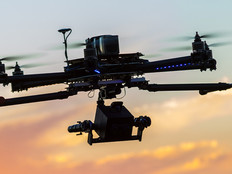St. Louis Tests Smart City Tech for First Responders
According to DHS, the pilot tested smart city capabilities in five major areas: situational awareness for emergency managers; computer-aided dispatch for emergency response; dynamic routing for emergency response around obstructions; agility for workforce mobility tasking/retasking; and in-building navigation for first responders.
“Technology is vitally important to protecting citizens, delivering emergency services and supporting public safety,” St. Louis CTO Robert Gaskill-Clemons, who has led the city’s smart city initiative, says in a statement. “It allows us to be much more proactive when it comes to protecting our citizens, versus primarily being reactive.”
DHS wanted to test how smart city technologies would help improve communication and emergency response in the event of a crisis. To simulate that, DHS and the city created a mock city operations center in downtown St. Louis at the T-REX office building, a nonprofit incubator for tech startups. Then, the pilot put in play a series of five scenarios stemming from a fictitious major storm hitting St. Louis following weeks of heavy rain.
Among them: The pilot looked at river mounting, in which emergency managers were alerted to the rising Mississippi River waters on their SCIRA dashboards via IoT flood sensors that were deployed around the river.
Those sensors and other connected assets “not only gave city personnel an early warning that the river was breaching its banks, but also visually displayed where it was happening via the dashboards,” DHS states in the release, allowing the city to preposition assets to respond.
A second scenario involved flash flooding in the city, the extent of which was monitored via sensors. “SCIRA provided citizens in the community the opportunity to send pictures of flooded areas through an app,” DHS notes. “Then, computer systems at the Operations Center analyzed the information and published emergency action alerts.”
At the same time, smart mapping tools kicked in for both citizens and emergency responders to avoid flooded roadways.
The Department of Homeland Security has finished its pilot project with St. Louis and conducted an emergency simulation.
The third scenario involved a response to aid vulnerable populations in the city, including those experiencing homelessness and others who are physically challenged to evacuate in the event of flooding “Through historical data about where these populations may reside and street camera confirmation, proper authorities were (in simulation) dispatched to offer assistance when it was determined that water was heading in that direction,” DHS notes.
In another scenario, flood waters breached the mechanical room of an office building basement, which caused a short circuit and resulted in a fire. Firefighters were routed to the burning building via smart mapping tools that got them around flooded streets.
“When they reached the building, IoT sensors in the walls helped some firefighters with in-building navigation to the blaze, while other responders were directed to rescue trapped office workers,” DHS says. “When a firefighter battling the flames experienced irregular heartbeats, a physiological monitoring device on his wrist informed the incident commander of his physical distress, and he was assisted immediately.”
The simulation also called for a car to lose control, hydroplane and hit a fire hydrant, leading to increased flooding. A CAD alert prioritized and rerouted the nearest first responders so they could react to the accident while city water crews were sent to shut off the hydrant.
The SCIRA approach, according to DHS, is designed to “allow emergency managers and public officials far greater real-time situational awareness, so they can make better, more informed and more efficient decisions,” so more lives can be saved.
“This pilot fits into our mission to protect our citizens, but also fits into a mission to protect our first responders as well. … The types of technology that are available today, that were demonstrated during this pilot, allow the city to overcome challenges we’ve had,” Gaskill-Clemons says. “Multiple departments being able to respond at the same time, all departments having the same information, the ability to speed up our response times, especially when multiple departments are involved … It was just amazing to see how this exercise played out.”











